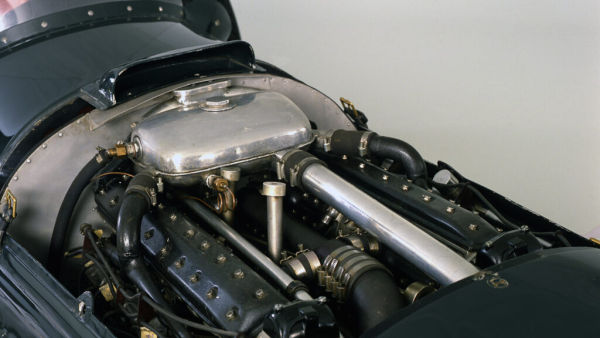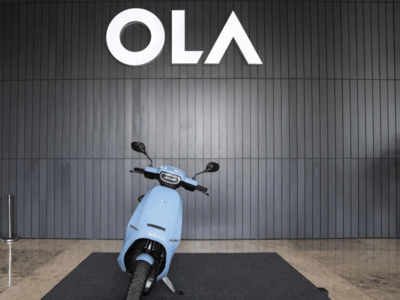Since the first internal combustion engine fired up in the 19th century, engineers have been trying to push its limits. Each generation of technology has come with its own walls to break, whether it was moving from carburetors to fuel injection or replacing mechanical distributors with digital engine management. Every step forward has been about making old ideas more efficient and refining designs that didn’t quite work the first time around.
That process has led to some truly wild creations. Think of early 16-cylinder monsters, the flawed but ambitious V16s of the 20th century, and today’s Bugatti W16s that make hypercars possible. Or consider Oldsmobile’s early experiments with turbocharging, which paved the way for the compact, computer-managed turbos powering everything from economy cars to race machines now. Along the way, plenty of unusual solutions showed up, some brilliant, others simply bizarre.
This list looks at those complicated attempts. They weren’t always successful, and in some cases, they were outright disasters. But every one of them left a mark, showing just how far carmakers were willing to go to chase power or just sheer bragging rights.
Bugatti W16
For nearly two decades, Bugatti’s 8.0-liter W16 has been the beating heart of the world’s most extreme road cars. First appearing in the Veyron 16.4 back in 2005, it was unlike anything before it: 16 cylinders, four turbochargers, and 1,001 horsepower. That was enough to launch the car to 254 mph and establish the “hypercar” as its own category.
Chiron raised the stakes again in 2016. Larger turbos, a new fuel injection system, and lighter materials pushed output to 1,500 hp, later bumped to 1,600 in the Centodieci and Chiron Super Sport. In 2019, the Chiron Super Sport 300+ became the first production car to break the 300-mph barrier, clocking 304.773 mph.
The W16’s unique “W” configuration made the engine surprisingly compact for its displacement. More than 3,500 parts were assembled by hand, with cooling, turbocharging, and exhaust systems engineered at a scale never seen in road cars before. The result was smooth, relentless power with none of the fragility that usually comes with chasing records.
But even icons have limits. Bugatti CEO Stephan Winkelmann has confirmed the W16 is “the last of its kind.” The company is now looking toward hybrids, taking cues from rivals like McLaren and Ferrari. That makes the Veyron, Chiron, and their special editions the final chapter for this one-of-a-kind powertrain: an engine that turned outrageous horsepower into reality, and left the rest of the industry playing catch-up.
Pratt & Whitney R-4360 Wasp Major
The Pratt & Whitney R-4360 “Wasp Major” marked the end of the line for big piston aircraft engines in the United States. First run in 1944, it was a 28-cylinder, air-cooled radial laid out in four rows of seven cylinders, arranged in a spiral pattern that earned it the nickname “corncob.” Displacing 4,360 cubic inches (71.5 liters) and weighing roughly 3,500 pounds, it produced between 3,000 and 4,300 horsepower, depending on the variant.
The R-4360 powered some of the largest American aircraft of the late 1940s and 1950s, including the Convair B-36 Peacemaker, Boeing B-50, Douglas C-124 Globemaster II, and the Fairchild C-119 Flying Boxcar. The Hughes H-4 “Spruce Goose” also used the Wasp Major, further cementing its place in aviation history as one of the most iconic radial engines ever put in a plane.
While it proved reliable in flight, the engine wasn’t simple to live with. Crews needed laborious checks during startup and shutdown, and cooling was always a challenge with four tightly packed rows of cylinders. Even so, the R-4360 was the most advanced and complex piston engine ever produced in large numbers. Nearly 19,000 were built before jet and turboprop engines made designs like it obsolete. By the late 1970s, with the retirement of KC-97 and C-97 tankers, the Wasp Major era officially ended.
Cizeta V16T
In the late 1980s, Claudio Zampolli set out to build a supercar unlike anything else on the road. The result was the Cizeta Moroder V16T, a machine defined by its unique 6.0-liter V16 engine. At a time when V8s and V12s dominated, Zampolli believed that a sixteen-cylinder powerplant would make his car truly stand apart.
Cast as a single block, it featured dual crankshafts geared into a single output shaft, eight camshafts, and 64 valves. Mounted transversely behind the cabin, it produced 540 horsepower at 8,000 rpm and 400 lb-ft of torque at 6,000 rpm. That output was routed to a ZF five-speed manual and delivered to the rear wheels.
Its size dictated much of the car’s design. The transverse layout made the Cizeta one of the widest supercars ever built, measuring over 80 inches wide. The packaging challenge gave the car its name: “V16T,” with the “T” referring to the transverse placement of the engine relative to the longitudinal gearbox.
Few engines of the era were as ambitious. Expensive and difficult to manufacture, the V16 limited Cizeta’s production to around ten cars before the project collapsed. The V16T engine stands as both a technical curiosity and a bold reminder of a short-lived attempt to outdo the established Italian supercar hierarchy.
Lancia-Abarth Triflux
The Lancia Triflux engine stands out as one of the most ambitious ideas never fully realized. Developed for the Delta ECV, a prototype built to succeed the Delta S4 (one of the fastest rally cars of all time), the Triflux was a 1.8-liter inline-four with twin turbochargers and a radical cylinder head design.
At its core, engineer Claudio Lombardi wanted to solve lag in small-displacement turbo engines while keeping power levels competitive. Instead of a conventional layout with intake on one side and exhaust on the other, the Triflux alternated valve placement in an “X” pattern. Two diagonally opposed intake valves fed air from the top-mounted plenum, while the other two pushed exhaust gases out opposite sides of the head. This created three distinct flow paths (one intake, two exhaust) and gave the engine its name.
The benefits were significant. By balancing heat across the head, the design reduced thermal stress and improved cooling. More importantly, it allowed engineers to use two smaller turbochargers without the drawbacks of a single large unit. One turbo handled low revs while the second came alive at higher rpm, making power delivery far more linear than earlier Group B setups.
The Triflux produced between 600 and 800 horsepower from just 1.8 liters, a figure that rivaled much larger engines of the era. But Group S regulations were canceled before it could compete, leaving the ECV and its Triflux as a fascinating “what if” in rally history.
Porsche Fuhrmann (Type 547)
In the early 1950s, Porsche needed a racing engine that could push its small cars beyond their limits. The answer came from Ernst Fuhrmann, a young engineer who designed the Type 547, a four-cylinder boxer unlike anything before it. With four overhead camshafts, dual ignition, dry sump lubrication, and vertical “king-shafts” driving the valvetrain, it was both complex and brilliant.
The Fuhrmann engine first appeared in the Porsche 550 Spyder in 1953. Compact and capable of 8,000 rpm, it quickly made its mark on endurance racing. A 1.5-liter version producing 110 horsepower helped secure class wins at Le Mans and the Carrera Panamericana. Later versions stretched to 2.0 liters and up to 180 horsepower, powering cars like the 718 RSK, 904, and even Porsche’s short-lived Formula 1 efforts.
However, precision came at a cost. Roughly 300 components had to fit into the aluminum case, with tolerances so tight that temperature swings could cause problems. No two engines were exactly alike, and servicing them required specialists. Consequently, fewer than 2,000 were built. By the mid-1960s, the simpler six-cylinder 911 motor replaced the Fuhrmann engine, but its legacy remains.
Koenigsegg Regera Direct Drive
The Koenigsegg Regera takes a very different approach to power. Instead of using a traditional gearbox, the 1,700+ horsepower hybrid hypercar relies on Koenigsegg Direct Drive (KDD), a system that links the twin-turbo V8 and three electric motors directly to the rear wheels. No gear changes, no ratios to shuffle through: just a fixed 2.85:1 final drive and a fluid coupling that connects or disconnects the engine.
At low speeds, the Regera moves using its electric motors. Each rear wheel has its own motor producing about 240 hp, while another 215 hp unit is mounted to the crankshaft. Together with the battery pack, this allows up to 50 km of electric range. The V8 is idle until the car moves, when the hydraulic coupling closes and activates the engine. By 30 mph, the engine can be fully locked to the rear axle, turning at around 1,000 rpm. From there, acceleration is relentless until the redline at 8,250 rpm, which corresponds to the car’s 251 mph top speed, making it one of the fastest models Koenigsegg has ever made.
This setup eliminates the losses of a conventional transmission and avoids the inefficiencies of a series hybrid system. It also makes use of the electric motors for torque-fill at launch and regenerative braking. The result is brutal performance: 0–400–0 km/h in just 31.49 seconds, a record set in 2019.
Saab Variable Compression (SVC) engine
At the 2000 Geneva Motor Show, Saab unveiled a futuristic powertrain concept. The Saab Variable Compression (SVC) engine promised both fuel savings and performance, something conventional engines couldn’t balance. On paper, the 1.6-liter five-cylinder prototype delivered up to 225 horsepower and 224 lb-ft of torque, figures closer to a tuned 3.0-liter engine. Yet Saab claimed fuel consumption could drop by as much as 30% compared to naturally aspirated counterparts.
The secret was in the design. Instead of a fixed compression ratio, the SVC engine used a hinged two-piece construction. The top section, which Saab called the “monohead,” could tilt by up to 4 degrees relative to the block below. A hydraulic actuator handled the movement, adjusting the volume of the combustion chamber and therefore the compression ratio. The setup allowed continuous variation between 8:1 under load and 14:1 during light driving, optimizing both efficiency and power delivery.
To optimize its small displacement, Saab paired the variable compression system with a mechanical supercharger capable of delivering 2.8 bar (40 psi) of boost. That choice gave the engine fast response and high torque, while still keeping efficiency at cruising speeds. Saab’s in-house Trionic engine management system handled the complex balancing act of boost pressure, tilt angle, and fuel delivery. Despite strong early results and confirmation from independent testers, the SVC project never reached production. Costs and Saab’s financial position under GM ultimately left the technology as a promising prototype rather than a showroom reality.
Mazda Wankel Rotary engine
When most people think of an engine, pistons come to mind. Mazda, however, built its reputation on the iconic Wankel rotary engine. Capable of producing high horsepower from a small displacement, the rotary engine used a spinning triangular rotor instead of pistons, allowing Mazda to squeeze impressive power into a small package.
The RX-7 became the high point of Mazda’s rotary lineup. The FD-generation RX-7, with its 1.3-liter twin-turbo dual-rotor engine, produced 255 horsepower and could sprint to 60 mph in just over five seconds. Lightweight construction and rear-wheel drive made it a driver’s car, but efficiency and emissions were always problems. By the time the RX-8 arrived in 2003, those issues caught up. Despite its unusual styling and rear-hinged doors, the RX-8’s naturally aspirated rotary failed to keep pace with rivals. Mazda ended production in 2012, seemingly closing the chapter on rotary cars.
However, in 2023, Mazda reintroduced rotary technology in the MX-30 e-Skyactiv R-EV, though not in the way enthusiasts hoped. Instead of driving the wheels, the rotary works as a generator in a plug-in hybrid system. The decision solves some emissions challenges, but efficiency still lags behind hybrid rivals. Even so, Mazda insists the rotary remains part of its future, with concepts like the Iconic SP hinting at where the technology may go next.
Chrysler A-831 Turbine engine
Built in the early 1960s, Chrysler’s A-831 turbine engine was one of the most ambitious experiments in automotive history. The A-831 promised smooth operation and the ability to run on almost any liquid fuel. Peanut oil, diesel, kerosene, even cognac — the engine could burn it all. But making a jet-inspired powerplant usable in a passenger car required more than bold claims. Two critical engineering solutions made it possible: regenerators and variable nozzles.
The regenerator was essentially a spinning heat exchanger that captured energy from scorching exhaust gases. Turbine engines naturally produce exhaust temperatures over 1,000 degrees Fahrenheit, far too hot for daily driving. Chrysler’s design cut those temperatures in half while preheating intake air, improving combustion efficiency, and reducing fuel consumption. It was an elegant way to solve two problems at once.
Variable nozzles addressed another issue: response. Turbines are slow to spool and provide no engine braking. Chrysler fitted a rotary nozzle array with 23 movable blades controlled hydraulically by throttle input. At idle, the blades stayed open. Under acceleration, they angled with the turbine’s rotation for smooth power delivery. On throttle lift, they redirected flow against the turbine to slow it down, creating artificial engine braking.
Even with these advances, the A-831 had drawbacks. Real-world fuel economy often fell below that of comparable piston engines, and laggy acceleration drew criticism. Still, the engineering ingenuity behind Chrysler’s turbine program remains a milestone in automotive history.
Cadillac V8-6-4
In 1981, Cadillac became the first automaker to mass-produce a variable-displacement V8. Called the L62 “V-8-6-4,” the engine could shut down two or four cylinders depending on load, promising up to 30% better fuel economy. On paper, it looked like a way to rescue Cadillac’s image in the wake of the energy crisis. In practice, it was one of the worst V8 engines ever made.
The idea was straightforward. A computer monitored sensors tracking manifold pressure, rpm, throttle position, and more. When the car was cruising, solenoids locked rocker arms to keep certain valves closed, effectively turning the 6.0-liter V8 into a smaller six- or even four-cylinder. A dashboard gauge called the MPG Sentinel showed how many cylinders were firing.
Problems came thick and fast. The processor in charge couldn’t keep up with real-world demands. Cylinder transitions were often rough, with hesitation, surging, and constant hunting between modes. Fuel injection never synced properly, leaving either too much or too little fuel for the number of active cylinders. Drivers didn’t need the Sentinel to know what was happening — the lurching was obvious. And while Cadillac claimed modest gains, real-world economy barely budged. Car and Driver logged just 11 mpg in testing, far below expectations.After 13 software revisions, GM pulled the plug after only one model year.
Oldsmobile Turbo-Rocket
In 1962, Oldsmobile introduced the Jetfire, a compact coupe based on the Cutlass that carried a turbocharged V8. Called the Turbo-Rocket, the 215-cubic-inch aluminum engine made 215 horsepower and 300 lb-ft of torque. That worked out to one horsepower per cubic inch, a rare achievement at the time.
The engineering was ambitious. A Garrett AiResearch turbo delivered 5 psi of boost, paired with a Rochester carburetor and a high 10.25:1 compression ratio. To keep detonation under control, Oldsmobile added a methanol-water mix called “Turbo-Rocket Fluid.” When the tank ran dry, a warning light appeared on the console, and boost was cut back. This unusual system, inspired by WWII aircraft engines, was clever but fragile. Many owners forgot to refill the fluid, and spark knock remained a problem.
On the road, the Jetfire was quick for its day. 0 to 60 mph came in about nine seconds, with a quarter-mile time in the high 16s and a top speed around 110 mph. It wasn’t muscle car fast, but it was peppier than most family cars of the early ’60s. Handling, however, left much to be desired, with soft suspension and vague steering.
Only 9,617 Jetfires were sold between 1962 and 1963. Reliability issues and the public’s preference for larger, naturally aspirated V8s doomed the project. Still, the Jetfire became the first mass-produced turbocharged V8 and one of the earliest factory turbo cars ever made, a milestone that laid the groundwork for decades of forced-induction engines.
Volkswagen VR6
The VR6 was unusual from the start. With a narrow 15-degree angle between cylinder banks and a single cylinder head, it blended traits of both inline and V engines. This compact layout made it possible to fit six-cylinder performance into vehicles originally designed for four-cylinders, like the Golf and Corrado. Over the years, it also powered many more cars, including the Passat, Jetta, Touareg, Transporter, and even rare halo cars like the Beetle RSi.
Performance was only part of the VR6’s appeal. Its unique exhaust note gave models like the Golf R32 and Corrado VR6 a sound that stood apart from typical four-cylinders. For enthusiasts, that character mattered as much as the horsepower. But as emissions rules tightened and turbocharged four-cylinders improved, the VR6 became harder to justify. By the early 2020s, only the Atlas SUV carried it in the U.S., offering 276 hp and 266 lb-ft from a 3.6-liter version. That has since been replaced by a smaller, more efficient turbo four.
Volkswagen’s financial struggles and the global shift toward EVs sealed the VR6’s fate. While aftermarket tuners like HPA Motorsports will keep it alive in modified form, the engine that once defined VW performance is officially history. For fans, it’s the end of an era.








